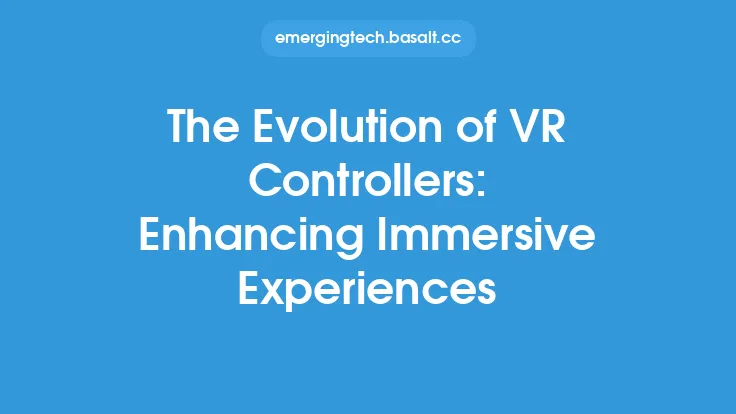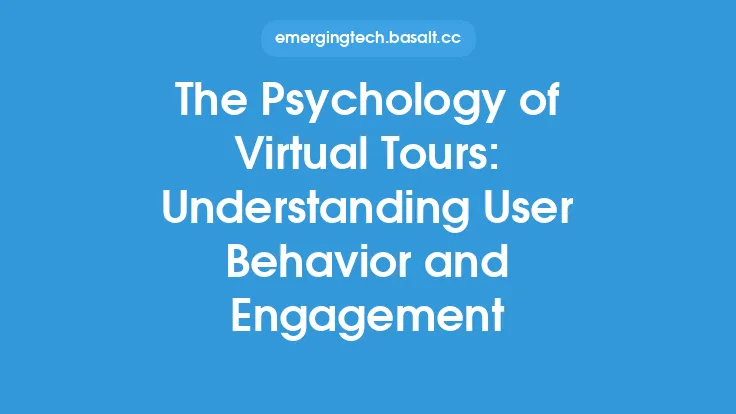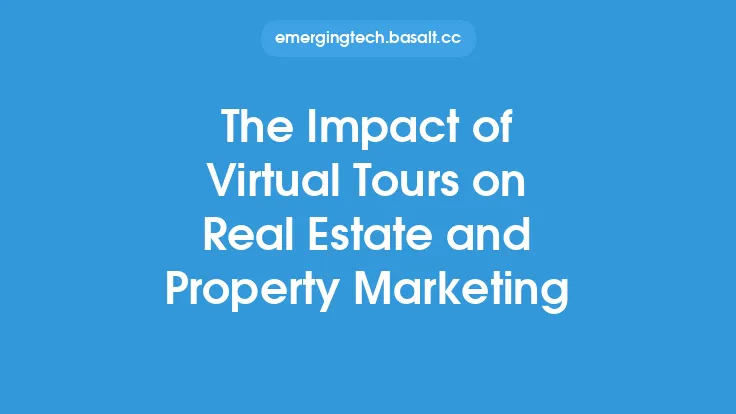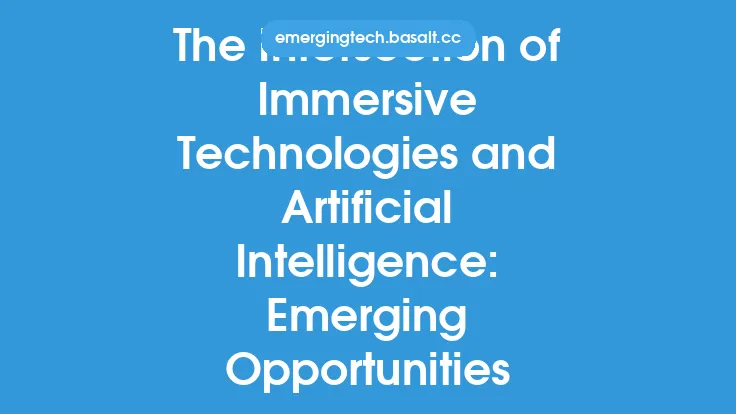The concept of virtual tours has been around for several years, but it's only recently that the technology has advanced to the point where it's possible to create truly immersive experiences. Virtual tour design is an art form that requires a combination of technical skills, creativity, and attention to detail. In this article, we'll delve into the world of virtual tour design and explore the key elements that make an immersive experience.
Introduction to Virtual Tour Design
Virtual tour design involves creating a digital representation of a physical space, such as a building, a city, or a landscape. The goal is to create an experience that simulates the real thing, allowing users to explore and interact with the environment in a way that feels natural and intuitive. Virtual tour designers use a range of tools and techniques to create these experiences, including 3D modeling, photography, and programming.
Key Elements of Immersive Virtual Tours
So, what makes a virtual tour immersive? There are several key elements that contribute to an immersive experience, including:
- High-quality visuals: The visuals should be of high quality, with clear and detailed images or videos that accurately represent the physical space.
- Interactive elements: The tour should include interactive elements, such as hotspots, clickable objects, and virtual buttons, that allow users to engage with the environment.
- Realistic sound design: The sound design should be realistic and immersive, with 3D audio that simulates the sounds of the physical space.
- Intuitive navigation: The navigation should be intuitive and easy to use, with clear instructions and minimal clutter.
- Storytelling: The tour should tell a story or convey information in a way that's engaging and easy to understand.
Technical Requirements for Virtual Tour Design
Creating an immersive virtual tour requires a range of technical skills, including:
- 3D modeling: The ability to create detailed 3D models of the physical space, using software such as Blender or Maya.
- Photography: The ability to take high-quality photographs or videos of the physical space, using equipment such as 360-degree cameras or drones.
- Programming: The ability to write code that brings the tour to life, using languages such as JavaScript or Python.
- Virtual reality (VR) and augmented reality (AR) technology: The ability to create experiences that work with VR and AR devices, such as headsets or mobile devices.
Best Practices for Virtual Tour Design
There are several best practices that virtual tour designers should follow to create immersive experiences, including:
- Keep it simple: The tour should be easy to use and navigate, with minimal clutter and clear instructions.
- Use high-quality assets: The visuals and sound design should be of high quality, with clear and detailed images or videos.
- Test and iterate: The tour should be tested and iterated on, to ensure that it's working as intended and that users are engaged.
- Consider accessibility: The tour should be accessible to all users, regardless of their abilities or devices.
Tools and Software for Virtual Tour Design
There are many tools and software available for virtual tour design, including:
- Google Street View: A platform that allows users to create and share virtual tours of physical spaces.
- SketchUp: A 3D modeling software that's popular among architects and designers.
- Blender: A free and open-source 3D creation software that's popular among artists and designers.
- Unity: A game engine that's popular among developers and designers.
- Adobe Creative Cloud: A suite of creative apps that includes tools such as Photoshop and Premiere Pro.
Conclusion
Creating immersive virtual tours requires a combination of technical skills, creativity, and attention to detail. By following best practices and using the right tools and software, virtual tour designers can create experiences that simulate the real thing, allowing users to explore and interact with physical spaces in a way that feels natural and intuitive. Whether you're a business, an individual, or an organization, virtual tours can be a powerful tool for communication, education, and entertainment.





